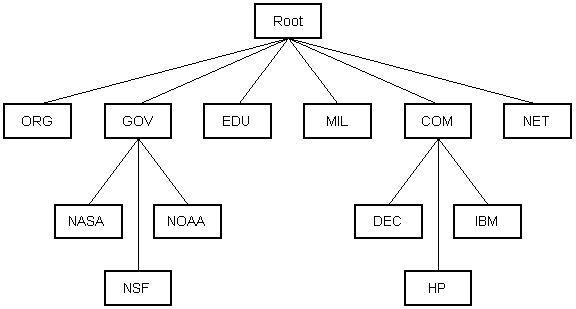Domain Names and Address Resolution
But what if you don't know the IP address of the computer you want to connect to? What if the you need to access a web server referred to as www.anothercomputer.com? How does your web browser know where on the Internet this computer lives? The answer to all these questions is the Domain Name Service or DNS. The DNS is a distributed database which keeps track of computer's names and their corresponding IP addresses on the Internet.
Many computers connected to the Internet host part of the DNS database and the software that allows others to access it. These computers are known as DNS servers. No DNS server contains the entire database; they only contain a subset of it. If a DNS server does not contain the domain name requested by another computer, the DNS server re-directs the requesting computer to another DNS server.

The Domain Name Service is structured as a hierarchy similar to the IP routing hierarchy. The computer requesting a name resolution will be re-directed 'up' the hierarchy until a DNS server is found that can resolve the domain name in the request. Figure above illustrates a portion of the hierarchy. At the top of the tree are the domain roots. Some of the older, more common domains are seen near the top. What is not shown are the multitude of DNS servers around the world which form the rest of the hierarchy.
When an Internet connection is setup (e.g. for a LAN or Dial-Up Networking in Windows), one primary and one or more secondary DNS servers are usually specified as part of the installation. This way, any Internet applications that need domain name resolution will be able to function correctly. For example, when you enter a web address into your web browser, the browser first connects to your primary DNS server. After obtaining the IP address for the domain name you entered, the browser then connects to the target computer and requests the web page you wanted.
